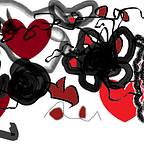Challenging the Image on Equity and Equality
Recently I attended a workshop on equity and the presenter decided to use the often circulated image of three people standing behind a fence watching a baseball game. In one image they all stare forward behind the fence, two are able to see the game and one stands staring at the fence. The picture depicts the idea that we all can arrive at the fence and possibly see the baseball game — this is suppose to depict equality. In the second image, they all stare forward at the baseball game, and the shorter person now has wooden blocks to adjust their height disadvantage to see the game. The picture aims to depict the idea that there are resources needed for everyone to see the baseball game — this is suppose to denote equity. The presenter at the workshop, after sharing the image and giving a definition of equality and equity then posed a question to the audience “what are some other questions we should ask?” I began to chat with some of the other attendees and this is where the questions began:
Why are there only males trying to see over the fence? Females like baseball, so where are the females in this picture?
There are many versions of this image and many overwhelming uses gender-specific images. The challenge in the picture is a lack of representation; equity cannot exist if there is no representation of others looking over the fence.
Why is equity about seeing over the fence?
There is another version of this image that depicts the removal of the fence to denote “liberation.” When you dismantle the fence, then they all get to see the baseball game no matter their height. If you eliminate the fence, there are perspective advantages, short versus tall, but they all see the baseball game. Equity in this image should be more about working to dismantle the social structure that grants privileges to taller people rather than giving shorter people wooden boxes.
Why does the image choose height as a form of privilege?
Height is a phenotype, a characteristic depending on a complex set of genetic traits one inherits from parents. The image evokes the idea that advantage is associated with some innate feature rather than a social structure or a set of social rules. We cannot use this image to talk about racial and income equity when race and class are social constructs rather than genetic traits. The image should actually have the individuals be the same height and they all have the same one box. When the individuals are perceived similar,yet one has some privileges bestowed upon them rather than an advantage inherited then it helps to communicate the argument that people are able to prosper when they have structural advantages.
What happens in the psyche of the taller person?
If equity is about providing resources for some (like boxes) to make up for the advantages, then what happens in the psyche of the taller person? Do they now have resentment for those who were given extra boxes? This psyche of resentment can parallel the increased hate and violence arising in the United States. Increased support for White supremacy or “making America great again” means turning this resentment and hatred towards immigrants, Muslims, and African Americans and stems from a resentful psyche. This may be particularly true in those who believe Whites are inherently superior to other groups.
What if the boxes are not strong enough to hold the shorter person?
The image appears to suggest the wooden boxes will work in supporting the shorter person to see over the fence and watch the baseball game. The strength of these boxes may not withstand the weight of the person and may break if the foundation is not strong enough. Falling off the wooden boxes due to inadequate support may lead to hurt or dealing with a wound that is far more detrimental to the shorter person over time than seeing the baseball game in that one moment.
Last, I acknowledge that everyone does not like baseball and will not have the motivation or desire to come to the fence, attempt to look over it, or break it completely. I also recognize a critical piece of the pictures are the agency of the shorter person. If we seek to promote equity, then maybe it is not about giving a person a wooden box or building one for them. Perhaps we need to strengthen the capacity of shorter people to build the structures needed to make sure the fence does not exist or they have actual tickets and are sitting in the seats. Maybe those who want to build the box need to sit down and ask the shorter person, “How do I work with you or what strengths can we tap together to achieve this idea of equity?”
